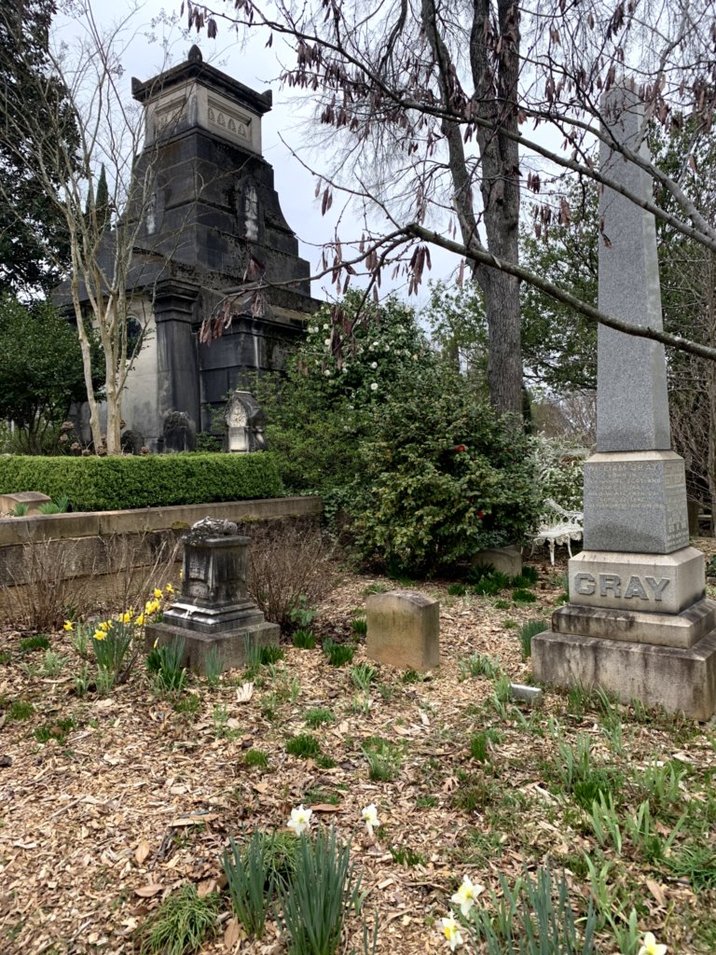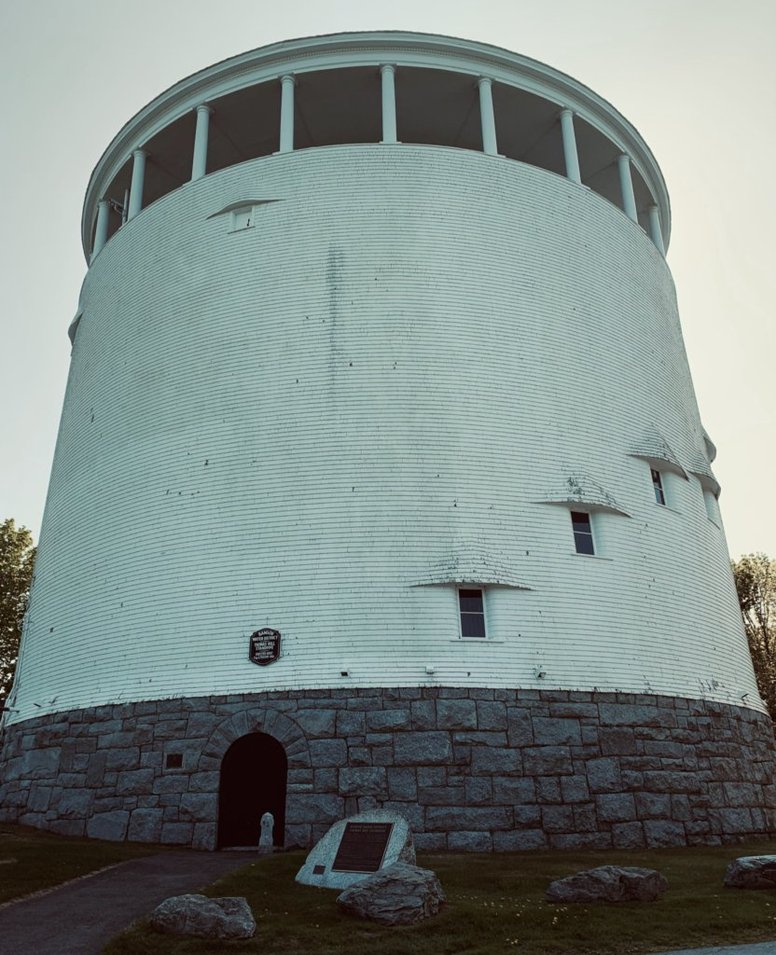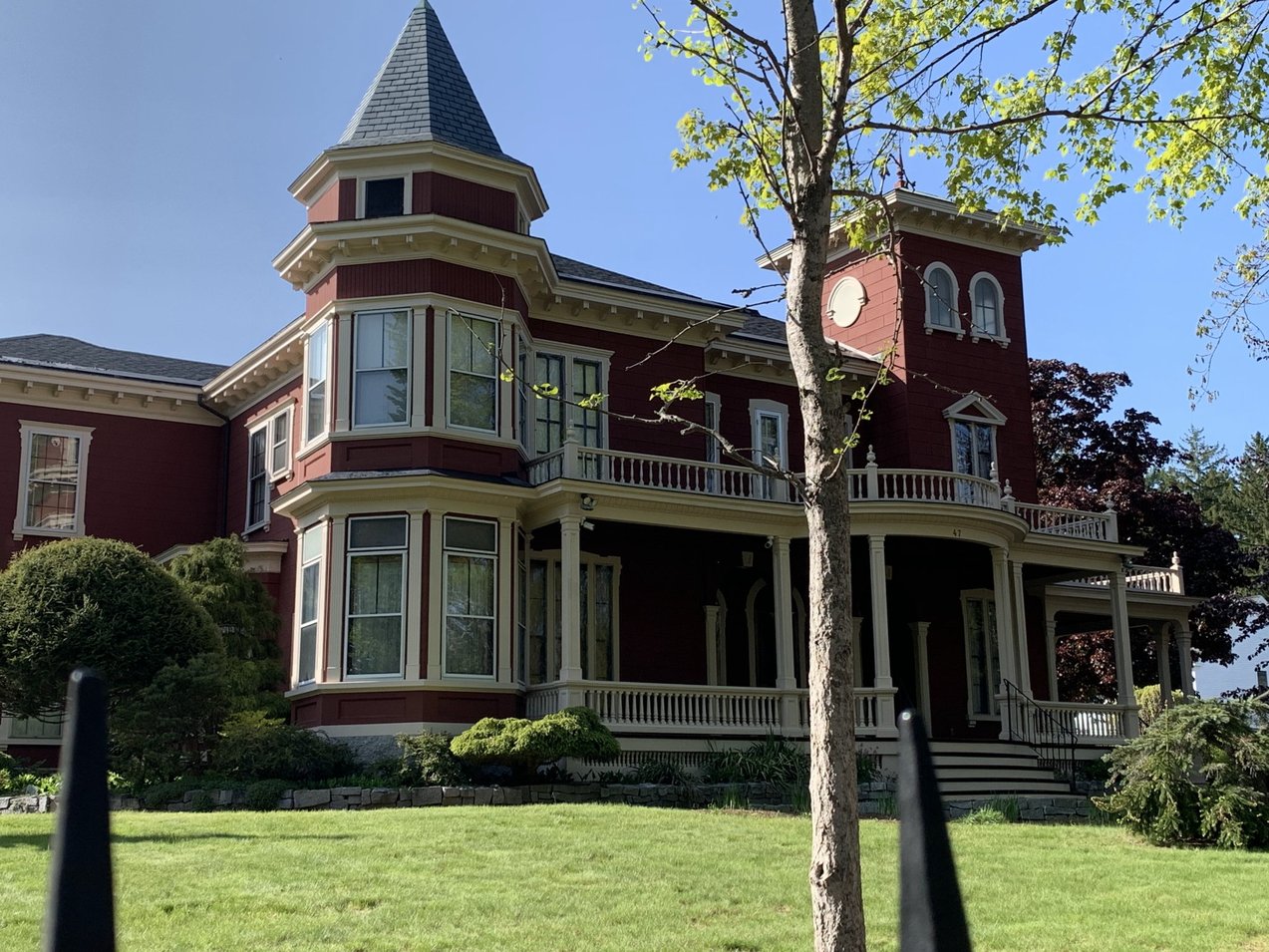
14 minute read
THE DARK TOURIST by Dawn Major
THE DARK TOURIST by Dawn Major
Think about it. When the families die off so do the people who tend the graves. Dark tourism (and even perceivably darker interests) is not only about tragedy. It may support the maintenance and repair of beautiful places in your own city.
When you fantasize about your next vacation, does it include images of white powdery beaches overlooking the Caribbean Sea while sipping on the Cocktail of the Day—let’s call it Crouching Tiger— and the only item marked on your schedule is afternoon Salsa dance lessons? Or do your holiday travels have more of a macabre flavor? Oh sure, you’re game for the cocktail but it’s likely to be called Zombie Juice or Black Widow Venom and while planning your “Must See” list, it includes a visit to a cemetery or possibly a ghost tour. If that strikes your fancy you may be what is called a DARK TOURIST, and I wrote this just for you.
So, what is dark tourism anyway? Generally, it’s described as visiting locations associated with death, tragedy, and suffering. I’ve seen it referred to as black tourism as well as grief tourism. Subcategories include disaster tourism, slum tourism, and war tourism. The fancy name for it is Thanatourism, and naturally there’s some Greek myth associated with that term.
Thanatos, the personification of death, is a minor Greek deity or daimon. He gets a bit of a bad rap, though. He doesn’t have nearly the fame and accolades that the ruler of the underworld, Hades, gets. He does serve a vital role—escorting souls from the realm of the living to their afterlife. Mortals were constantly trying to bribe and/or deceive Thanatos, to cheat death, and sometimes, it worked. As you can imagine, he wasn’t a popular bloke, which is one reason he wasn’t depicted in art or literature as often as some of his counterparts, because hey, no one wants to talk about death. Or do we?
Netflix released a series called “Dark Tourist,” and I recently watched an episode where people visited Fukushima, Japan. In 2011, an earthquake and a tsunami caused the Fukushima Daiichi nuclear plant to explode and leak, causing 20,000 deaths and a massive environmental disaster that’s still being cleaned up today. It’s very off-limits. You can get arrested for trespassing, but one thing I’ve learned about humans is if you tell them “NO,” then they will want to do it even more. So, these dark tourists snuck in anyway, walked around oohing and aahing when their personal handheld nuclear radiation detectors were going wild oftentimes reporting levels higher than Chernobyl. You’re thinking: “Why would anyone want to expose themselves to radiation?” And then there’s the tragedy of all those people who died and poor Mother Earth!
I think there may be an upside to dark tourism, however. The Japanese government released the evacuation order for the city of Miyakoj giving the go ahead for people to start moving back. Miyakoj is approximately twelve miles from the nuclear plant. Bet you can get some cheap real estate there! In addition, Japan has run out of storage space for the treated wastewater. Guess where it’s being dumped? If you answered the Pacific Ocean, I’VE GOT A WINNER! According to a U.S. News and World Report, “The International Atomic Energy Agency (IAEA), the U.N. nuclear watchdog, gave the plan a green light in July, saying it met international standards and the impact on people and the environment would be “negligible.” Well, then. Gosh, shucks if some governmental body tells me it’s okay, well surely it is. So environmental groups and Japan’s big neighbor, China, are demanding more transparency and claiming that there hasn’t been enough research to fully understand the impact releasing treated water will have on marine life and people. Mmmm…
I realize why dark tourism may appear to be commodifying tragedy and that these people visiting Fukushima are doing it to get a thrill by trespassing in dangerous areas. Hey, I wouldn’t do a Ted Bundy tour for the same reason I don’t watch some of these documentaries glorifying murderers at the victim’s expense. Fukushima is also not for me—radiation contamination isn’t my thing. But seeing is believing and I hope the people who are being told it’s safe to move back, get a chance to watch this episode of “Dark Tourist.” If we can draw a positive from visiting the Fukushima disaster site, it would be the exposure of Japan’s government’s secret less radiation contamination.
My foray into dark tourism began the summer when I backpacked through Europe with my sisters. I officially became addicted to cemeteries. We visited Jim Morrison’s grave in Pere Lachaise Cemetery. It was everything I expected and more. It was overcast that day like walking into sepia. His grave was adorned with lit candles, flowers, and notes from admirers in a variety of languages. Typically, I’ll visit cemeteries where writers are buried, and Morrison was first a poet/songwriter and then a singer in my humble opinion.
I live in Atlanta and volunteer at Oakland Cemetery, another stunning cemetery, with super cool events, like Capturing the Spirit and Sunday in the Park. I had the pleasure of writing scripts for some of their residents (Behind the Scenes: Sunday in the Park at Oakland Cemetery – Oakland Cemetery). Of course, I’ve left an ink pen on Margaret Mitchell’s grave. I’ve also left pens on the graves of Louisa M. Alcott’s and Henry David Thoreau’s at the Sleepy Hollow Cemetery in Concord, ME. It’s a writer thing, kind of similar to Catholics and their saints.
After we left Paris, we headed to Amsterdam where we visited the Anne Frank House. Like many teenagers, I read the American translation of Annelies Marie Frank’s diary, Anne Frank: The Diary of a Young Girl, when I was thirteen which happens to be the same age Anne was when she lived in the secret annex with her family and another family. The book had such an impact on me that visiting her house was on my “Must See” list. And yes, there was something that piqued my darker interest; I am a believer in ghosts, and I wondered if I might see the ghost of Anne. However, my real fascination came from my desire to have a deeper biographical view into the life she described in her diary. Reading her diary entries and touring her last home will never convey her experience of living in German occupied Holland or her daily fear the Nazis would discover them. I don’t think it was a presence per se, but upon entering the house, I felt a heaviness. I think it’s because their lives, like so many, were lamentably truncated by evil. If any residual energy remains yet, I believe it came from the house absorbing fear and then the terror of being discovered. Their worst fears came true; they were found by the Nazis, arrested, and sent to Death Camps.
Even though my sister and I left in tears, I would highly recommend visiting the museum.
If anything, it’s historically relevant. And I don’t believe for a second that Anne haunts the secret annex. In fact, I like to imagine she is free to laugh and sing out loud without the worry of being heard, to be a silly teenager, to find love, and live a long and happy life, the life she was denied. If any of the house’s former residents still linger, then it is echoed by the visitors themselves in whispers and their muffled crying.
Since my entry into dark tourism, I’ve gone on several ghost tours and even visited abandoned cemeteries in ghost towns. In Savannah, GA my sister and I went on a pub ghost tour (we probably scared off the dead!) and me and my family went on another ghost tour of the city in a hearse.

I figured it would serve as my test drive for, well you know, when I’m being piloted to my final destination. I have stayed at haunted hotels: The Marshall House in Savannah, GA and the Menger Hotel in San Antonio, TX. The Marshall House functioned as a hospital twice: a Union hospital during the Civil War and again during the Spanish Flu. Workers unearthed human remains under floorboards that are said to be the amputated limbs of solders. A ghost kept hiding my sister’s stuff. I swear half the time we stayed there, she was searching for jewelry and she’ s extremely OCD and super organized. I never slept in the room. Sometime during the witching hour I’d leave our room, travel down the stairs to the lobby and sleep on a sapphire blue velvet couch.

I don’t know why, and the hotel staff didn’t mind. I probably wasn’t the first person to do this. People claim the ghost of Teddy Roosevelt will belly up to the Menger Bar and recruit people to join his Rough Riders. I didn’t see Teddy, but I will say the carpeted long halls reminded me of the halls of the Overlook Hotel from the movie, The Shining. Very creepy. Speaking of one October my husband and I booked The Shining experience at Hotel Clermont in Atlanta. It comes with a bottle of Jack, a typewriter with pages and pages of “All work and no play makes Jack a dull boy” typed on them. “REDRUM” in red lipstick is written across the mirror.

There’s something that really freaked me out during our stay, but I won’t ruin it in case you decide to book it. I was hoping they would chop the hotel room down with an axe, but when I requested it the front desk folks gave me a strange look. Hey, if you’re going there, I say go full throttle.
While I’m on the subject of the horror genre, I must share one of my favorite tours that was in Bangor, ME. You got it, the Stephen King Tour! While some of the locations may not be considered fall exactly under the realm of dark tourism, my interest as extended to horror-genre related tours or places. King was greatly influenced by the real town of Bangor; the town inspired many of his settings in his fictional town of Derry, ME. It felt like I was walking into one of his books or movies.
Well, obviously we visited Mount Hope Cemetery and Crematory where the original Pet Sematary was filmed. Remember? Stephen King was the minister at Gage’s funeral (to this day I still can’t leave my Achilles tendon exposed to the underneath of any bed).

There’s a tombstone in the same cemetery, CARRIE M., that is speculated to have inspired the novel and movie, Carrie, but it hasn’t been confirmed by King.

My pal Raymond Adkins hunts for character names in cemeteries. This not an uncommon practice for writers, by the way. Shoutout, Adkins has written a collection of poetry all inspired by tombstones and cemeteries, but, sorry, you’ll have to wait for that little treat until Fall of 2024.
We visited the Thomas Hill Standpipe, a gorgeous water tower and a national historical landmark. The character of Stan Uris from It first encounters Pennywise on the stairs in the Derry water tower. When King still lived in Bangor, he would write sitting on a bench in a small park shadowed by the Standpipe. Naturally, I took a seat. It’s called talent osmosis which is what I’m trying to achieve when I visit author graves.


Here’s a sad, but true story I heard on the tour. A homophobic hate crime occurred in the 1980s in Bangor that resulted in the drowning of Charles O. Howard. We passed over the bridge where Howard was thrown over. There’s a memorial there today. The crime really unsettled the town (as it should) and affected King’s writing of It. The misfit kid characters in the Loser’s group are constantly harassed; bullying is a central theme in It. Ironically, the one place on the SK Tour that was the scariest to me was based on reality and not King’s fiction.
Of course, we visited King’s famous blood red Victorian home (just the outside). The Kings don’t reside there anymore. It now serves as the location for the Stephen and Tabitha King Foundation which supports social and environmental causes in the communities of Maine, particularly in art, literacy, and community services.

The Kings also bought the house next door, restored it, and turned it into a guest house. If Stephen and Tabitha King happen upon this essay, I’m free whenever!

A wrought iron fence decorated with cobwebs, dragons, and spiders decorate the wrought iron fence that surrounds the house. There’s a dead ash tree in the yard, but rather than remove it, Tabitha commissioned a woodcarver to turn it into a bookshelf ornamented with animals and books. It was done with a chainsaw! There are two kitties. Perhaps, one represents Leo the cat from Pet Sematary and the other the cat, General, from Cat’s Eye. A dragon emerges from the back of tree, memorializing King’s high fantasy, The Eyes of the Dragon. There are also crows, a giant owl, a squirrel, and a corgi (a favorite pet of the Kings I later learned).
Our tour guide, who knows the Kings, took us by the sewage drain where Pennywise resides. We lined up to get photos next to the manhole cover and we were visited by Pennywise. He grew up with King’s children and he told us that when he was walking to school one day noticed Mr. King standing over the manhole lid studying it. Things that only occur if Stephen King is your neighbor, right!
I could go on and on about all the cool places we visited on that tour—the Paul Bunyan statute (another It film and literary reference. Go find it!), the Bangor Waterworks Plant (think enormous mutant rats from Graveyard Shift) Carrie’s high school (keep in mind, Carrie is a character and a work of fiction)—but I don’t want to give too much more away. The SK Tour (SKtour.com) is a must for King junkies and was incredibly fun.
I hope WELL READ readers who may have been unfamiliar with dark tourism or didn’t understand why some of us seem a little morbid, now have a better concept. Cemeteries like Oakland Cemetery host concerts and a there’s also a 5K on or near Halloween. You can dress up in costume and run through the cemetery. I’m a member of the Atlanta Chapter of Horror Writers Association and we’ve adopted a cemetery that had become overgrown. Think about it. When the families die off so do the people who tend the graves. Dark tourism (and even perceivably darker interests) is not only about tragedy. It may support the maintenance and repair of beautiful places in your own city. You might learn something, too. So, I leave readers with an assignment: Stay away from manhole covers and HAVE A SAFE AND SPOOKY HALLOWEEN!











